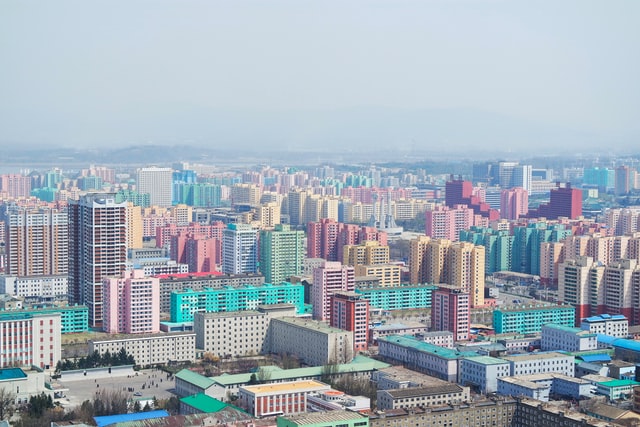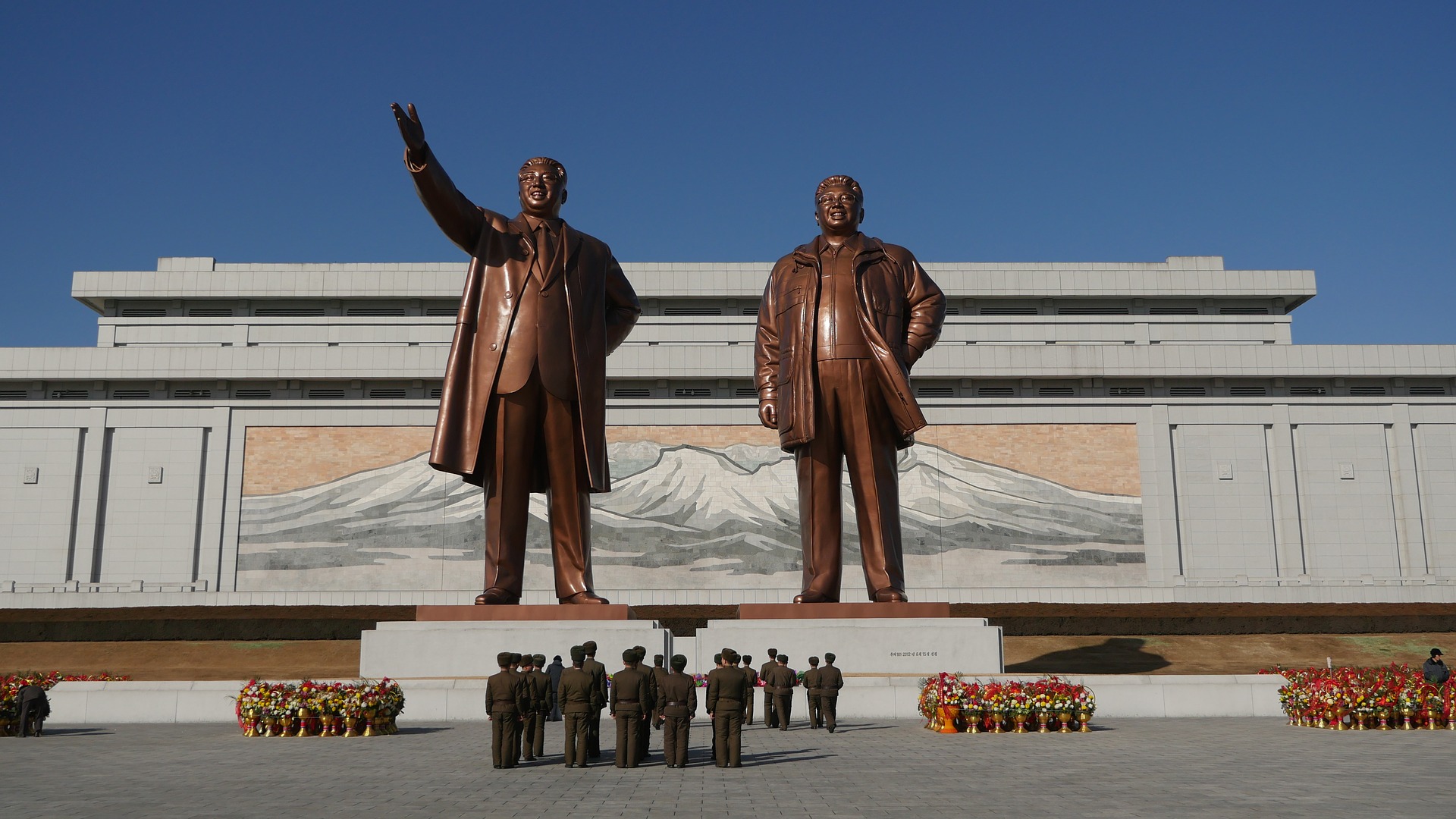Once again, it appears that all is not well in the hermit kingdom of North Korea. Supreme Leader Kim Jong Un has suggested that they are due for a repeat of the economic collapse and mass starvation that they experienced in the 1990’s. That’s what happens when you get hit with a pandemic and massive economic sanctions in the same year.
But this presents another dilemma for Mr Kim. His power is dependent on North Korea’s isolation and repression, but in order to rescue the country from collapse, he may have to start opening it up to the rest of the world, which would mean that the North Korean people may actually find out just how deprived they are. That’s why he’ll never give up his nuclear program. Saddam Hussain and Colonel Ghaddafi did that, and look what happened to them. Like his predecessors, Mr Kim is determined not to allow an international force, led by the USA, to storm in and dethrone his Premiership.
REMEMBER THE WAR
The Korean War which started in 1950, has not actually ended. There was a ceasefire in 1953, but not a treaty. Since that time there have been skirmishes at the border, but nothing resembling a recommencement of warfare. Not that North Korea has been anything resembling a good neighbour. Some examples of their diabolical behaviour include – numerous attempts to assassinate South Korean leaders, highjacking international flights, kidnapping foreigners, and more recently, cyber hacking.
Naturally, this malfeasance has lead to harsh economic sanctions from all over the world, hence the perennially struggling economy. Despite their imposed culture of “Juche” (aggressive self reliance), North Korea has always relied on money and arms from their allies, particularly the Soviet Union. Once that powerful nation collapsed, North Korea hit troubled times, and began to get nervous about security. They decided that they needed their own Nuclear arsenal.
Although, there was a brief period where they sat down with the west for negotiations. Under President Bill Clinton’s Administration, a peace deal was actually reached, but when his Republican rivals gained control of the Congress at the mid term elections, they did everything they could to ensure it failed. Later, when George W. Bush delivered his ‘Axis of evil’ speech, North Korea became hostile. This meant that Pyong Yang wouldn’t co-operate with any international non proliferation treaties, and continued developing its own nukes, with the first successfully tested in 2006. At the time of writing, they are a genuine Nuclear Power with missiles that can reach almost any country on Earth.
HOW DID WE GET HERE?
From ancient times up until the beginning of the 20th century, the Korean peninsula was run by an assortment of Royal Dynasty’s. It was later colonised by the Japanese Empire in 1910. They stayed for decades and brutalised their Korean subjects until the end of World War 2.
It was during this occupation that Kim Il Sang was born in April, 1912 (allegedly), and from the beginning, he was taught by his father to hate the Japanese overlords and never give in to them. Kim got involved in resistance movements at a young age, and his family would end up getting arrested and exiled to the Chinese region of Manchuria (also a Japanese colony).
It was here that he joined the Chinese Communist Party in 1931, and continued the fight against Japanese imperialism. Over time he would make powerful friends in both China and the USSR, and even served in the Soviet Army, as a Major, during World War 2. This allowed him to return to his homeland in 1945, when the Japanese forces in Korea were destroyed by the Red Army.
After the War, the peninsula was carved up and occupied by the victorious Allies. Korea would be split across the 38th parallel. The USSR took the north, and the USA took the south. There were numerous attempts to reunify the Koreas, but the two sides couldn’t agree on what type of Government they wanted to establish.
The Soviets established a committee to run things in the north, and Kim Il Sang – now Chairman of the Korean Communist Party – was put in charge and given the title of “Premier”. Whilst in the South, the people elected their own leader (Syngman Rhee) and the American forces went home.
Kim Il Sung quickly established his dictatorship, and developed a planned, centralised economy, together with the aforementioned philosophy of “Juche” – total self reliance. However, his ultimate goal was to unite all of Korea under his own socialist dictatorship.
THE INVASION
In typical Communist style, Premier Kim released all sorts of nonsense propaganda about South Korea planning an invasion, thereby justifying a pre-emptive strike by the north against the south. With Stalin’s blessing in 1950, he did exactly that, and on June 25th, the Korean War began. The Northern forces very swiftly took over almost all of the South, until the United Nations forces, lead by the USA, came to the rescue a few weeks later. After landing in Inchon, the UN forces quickly liberated the south, and pushed the northern forces all the way back to the Chinese border.
With victory in sight for the UN forces, China became uncomfortable with the USA and her allies on their doorstep, so they entered the war and pushed the allied forces back, to the 38th parallel. Then in 1953, an armistice was signed and a new border was established – in virtually the same place as the previous border (Just slightly diagonal rather than horizontal, when viewed on a Map).
The area around this new border became the infamous DMZ (demilitarised zone). At the edges of the DMZ, we had the South Korean Army – with its American made nukes – on one side, and the North Korean Army – with its Soviet made nukes – on the other. These weapons of mass destruction would spend the next six decades pointing at each other across the DMZ.
Kim Il Sung consolidated his power in North Korea, which became surprisingly prosperous throughout the 1960’s and 70’s, even outdoing their capitalist rivals in the South, for short while. In 1972, a new Constitution was written, giving Kim Il Sung the new title of “President”, along with many other unsettling new powers. He brutally suppressed opponents (real and imagined), promoted his cult of personality, and began rewriting official history, by claiming that he almost singlehandedly defeated the Japanese in 1945 and liberated the Korean Peninsula.
Anyone who disagreed with his agenda ended up in the Prison Camps. School children were taught that he alone feeds and clothes the nation, and his birthplace in Mangyongdae-guyok became a place of pilgrimage. The Korean War also meant that South Korea and the USA joined Japan in forming an unholy trinity of North Korean enemies.
He later anointed his son, Kim Jong Il as his successor, confirming North Korea’s status as a Monarchy in all but name. Economic stagnation in the 1980’s, followed by a massive famine, and the collapse of the Soviet Union, all conspired to hammer North Korea into the shattered society that it is today. Kim Il Sung died in 1994.
THE OFFSPRING
In 1998, the Constitution was amended once again, to make Kim Il Sung the “Eternal President of North Korea”. The new Supreme Ruler, Kim Jong Il, had over 50 different job titles, but officially, his dad was still the President. He carried on the laughable mythology around the Kim family – like the story about Kim Jong Il’s birth at the beautiful Mount Paektu, when a dove flew through the sky to herald his arrival, then winter turned to spring, a double rainbow suddenly appeared, and a bright star shone in the sky. He took the title of “Dear Leader” and following the famine, took credit for the food aid that was given by the international community for the starving North Koreans.
Now that the most obnoxious member of the Kim dynasty is gone (Deceased 2011), the new “Dear Leader” has started reaching out. Kim Jong Un has thus far met with the Presidents of South Korea, China, Russia and even the USA. It appears that the regime’s plan is to present a more palatable North Korean leadership, thus beginning possible trade talks, but without actually giving up the nukes.
So how do they plan to achieve this marketing miracle? Apparently, with the traditional good cop, bad cop routine. Kim Jong Un plays the respectable statesman, whilst his sister (and allegedly 2nd in Command) plays the henchman. Kim Yo Jong has been seen hovering in the background for her brothers entire leadership, but has recently stepped into the spotlight. She has been placed in charge of relations with the USA and South Korea, and is her brothers closest adviser.
In 2018, relations between the Korea’s were looking okay. Kim Jong Un had met with Moon Jae in (South Korean President) several times. There was talk of peace, dropping sanctions, a new Inter-Korean Liaison Office was built, and they even played as a United Korean Team, at the 2018 Winter Olympics.
But it didn’t last. The practice of South Korean’s sending propaganda leaflets and food via balloon, over the border, was frustrating the North Korean regime. In addition, they wanted South Korea to essentially break away from their alliances with the USA, Japan etc., and do deals with North Korea exclusively. Unfortunately, that is something the South Korean President cannot offer.
The fallout saw the resumption of North Korean military activities in the DMZ, and the impressive new liaison building was turned to rubble. All news reports suggest that these provocative moves were ordered by Kim Yo Jong. This gives Kim Jong Un plausible deniability, should negotiations ever resume.
IN CONCLUSION
Was the graciousness show by the Kim’s in 2018 just theatre? Or is there a genuine desire for peace on the Korean Peninsula? For decades, the west has assumed that the Kim regime will fall at any minute, and yet they just keep on keeping on. Now that they have a significant nuclear capability, an invasion by the US and her allies is highly unlikely.
Then there is China. Whilst the Chinese Government is getting tired of North Korea, they are happy to have that geographical buffer between themselves and the American artillery in South Korea. A united Korean democracy may see those weapons move up north, right next to the Chinese border. They really don’t want that.
Nor do they want thousands of hungry North Korean refugees pouring over the border into their already overpopulated country. Therefore, Beijing reluctantly continues to be a large source of economic aid for the North Korean Government. The next few years have the potential to change North Korea significantly. Although, we’ve heard that before.


